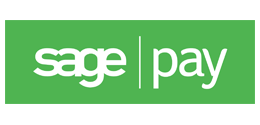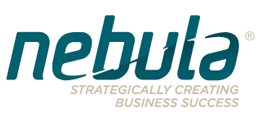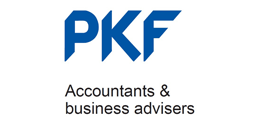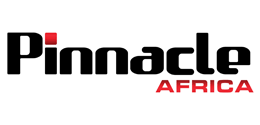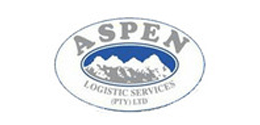Are you fighting a Price War or winning the Strategic Sales Battle?
Greetings Fellow Entrepreneurs, Sales Professionals and Managers!
Is it just me or did this year simply fly by, like an illegal taxi at a roadblock?
And what an exceptional year it has been. We have been blissfully busy working with two types of organisations: Those fighting the Price Wars and those who are winning the Strategic Battles.
Those fighting the price war are despondent, depressed, distraught and demotivated. They are GATVOL of the China Factor, Commoditisation, Globalisation, Financial Turmoil, Uncertainty, Indecisiveness, Aggressive Competitors and Endless Economic woes. (Ja dit is WOES!) They are tired of battling in the trenches, cutting prices to the bone, losing margin, juggling cashflow, getting their butts whipped by the opposition and not getting their damn credit applications approved. They call us in to equip their tired troops with new sales weapons and ammunition to go out and win the war.
Those winning the strategic sales battle are creative, upbeat, profitable, focussed and steadily growing market share. They are changing the rules, adding value, go-giving and delivering true customer service – not just lip service! These organisations call us in to strategise, train, coach, strengthen and enhance their already excellent sales armoury.
I hope that you are winning the strategic battle. If so, keep on fighting the smart fight. If however, you are still fighting a war, here are some tips to make real SHIFT HAPPEN for you and your organisation:
1. Stop trying to help your customers save money and start helping them to make more profit. Obviously all companies want to save on expenses, especially in these tough times, but their reason for doing that is to ultimately make more profit. Your strategy must be
to become their trusted advisor and show them genuine ways to become more profitable through working with you. They will then perceive you and your organisation as valuable business partners and therefore stop asking you for unreasonable, margin destroying discounts.
2. Stop Cold Calling and Start Going Fishing. Cold calling is scary, degrading, energy sapping and in most cases a real battle. Fishing is so much more relaxing and rewarding. To fish successfully for increased sales requires that you think strategically about: WHERE to fish, WHEN to fish, WHAT fish to target, what size TACKLE to employ and, most importantly, what BAIT to use. And it is important to remember that you need to exercise a little patience whilst perfecting the art of making consistently big catches.
3. Stop Telling and Start Selling. Your potential customers don’t care about your boring business card, company brochure, vision & mission, accolades, track record, achievements and awards. They care about the fact that you really care (about them and THEIR business) and are able to visibly and consistently demonstrate this caring in every interaction. Develop the art of strategic questioning and active listening to truly get inside their head and heart. Become a professional note taker and develop some form of CRM system to stay in contact. Then watch the deal close all by itself.
4. Develop an Effective Sales Strategy. This is the most important part of the whole plan. You develop an organisational and / or individual sales strategy to equip you for winning the sales battle. This requires you to do the hard work upfront which makes selling easy thereafter. There are many types of sales strategy. I will cover just four of them briefly:
- The “GameBreaker” Strategy.This is when you reinvent the game, re-write the rules, turn everything on its head and thoroughly piss off your competition. Think about how Outsurance completely revolutionised the short term insurance industry. Discovery Vitality did the same for the medical aid industry and Google used it to redefine the search engine space. This strategy requires real “out of the box” thinking, a healthy dose of confidence and the courage to take a calculated risk. The good news is that if cleverly designed, it does not need to cost a lot of money to be implemented with great effect.
- The Go Giving Strategy.We were all taught to be go-getters in sales. Go and get your foot in the door, get to the decision taker, get the deal, and get the commission. Whatever it takes. And what is this strategy getting us right now – zip – that’s what! To develop a successful Go Giving strategy, we need to ask a simple question: “What are we leaving behind after every interaction, which is really valuable to the customer and / or their business?” Is it information, tools, tips or strategies? Is it samples, ideas, stories or market intelligence? Does it add value to them, their life, their business, their team, their community or the planet? Come up with the tangible and deliverable answers to these questions and watch your sales grow effortlessly.
- The Added Value Strategy.This strategy is similar to the go giving strategy, in that it also asks an important question: “What more can we add to our product or service which will increase its perceived value in the customer’s eyes?” So we can add product training or proper instructions for use or hands on support or extra guarantees or additional useful features at no charge or anything else extra which will add value to our offering. Again, this strategy requires some very creative thinking to devise, but once implemented it delivers astounding results. Take Hyundai for example. They shifted from being perceived as a tiny upstart in the industry to becoming the fourth largest automotive company on the planet. And look at how quickly it happened for them!
- The Customer Centric Strategy. Do you really deliver true customer service? Or just Lip Service? Do you engage and interact with your customers on a regular basis, using their honest feedback to influence your strategy? Is every department in your business customer facing and trained to implement the above strategies with measurable consistency? Everyone in your organisation can add value to the sales process. Technicians, Credit Controllers, Receptionists and IT personnel can all be trained to spot and create sales opportunities. Most importantly, are your sales people able to draw upon specialists from all of your departments and deploy them to assist in customer engagement? If you strategically engage more aspects of your organisation with more aspects of your customer’s, you are instantly able to add tremendous value and simultaneously deepen the relationship for ongoing mutual benefit.
5. And Finally – Increase your Professional Selling Skills. Most of the recognised professions such as medicine, engineering, law, and accounting are required by their associations to engage in Continuous Professional Development (CPD) in order to maintain their accreditation, membership or right to practice. If we are really serious about succeeding at the profession of selling, the onus is on us to find creative ways to engage in your own continuous professional development. This can take many forms, including: Attending conferences or training workshops, talks or lectures, webinars, magazine subscriptions, reading books, listening to audio teachings, subscribing to newsletters, blogs or sales websites. Remember: Knowledge is power and power is knowledge applied.
If you are exhausted from fighting the price war, make some time to plan a significant strategic shift for 2012.
The battle is yours to win.
Yours in Strategic Selling
Mark Berger





















